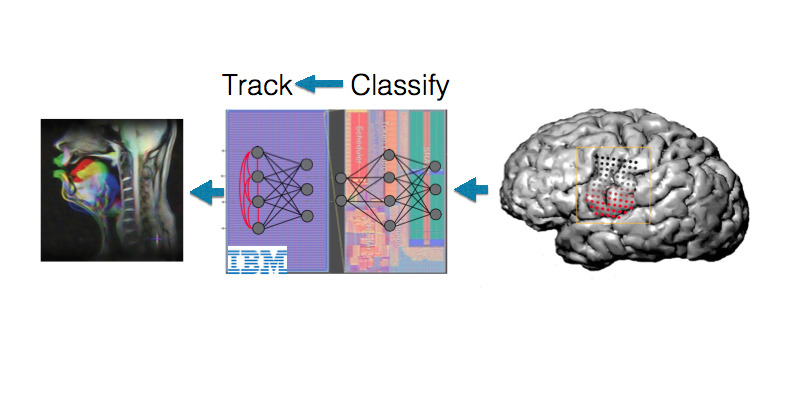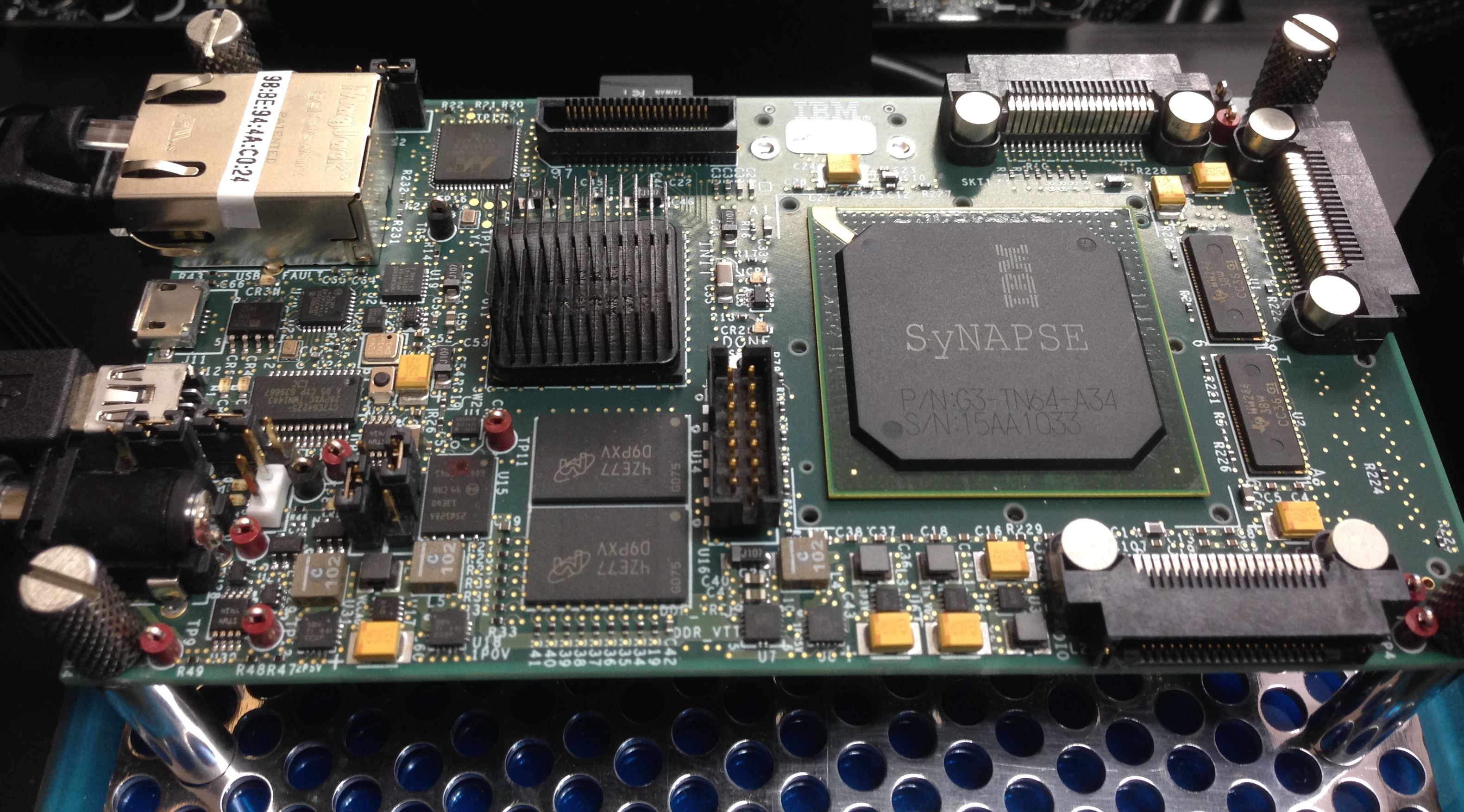
Berkeley Lab researchers are exploring the potential of IBM’s TrueNorth chips to restore lost behavioral functions via brain-machine interfaces (BMIs). Credit: Kristofer Bouchard
With funding from the Department of Energy’s (DOE’s) Laboratory Directed Research and Development (LDRD) program, Berkeley Lab researchers from the Computational Research Division (CRD) and the Biosciences Area are collaborating to explore how brain-inspired computer chips might benefit science.
Traditional von Neumann microprocessor architecture doesn’t scale to meet the computational needs of big data science. So a number of companies are looking to the human brain for inspiration. One such technology is IBM’s “neuromorphic” TrueNorth computer chip, a tiny, low-power chip that processes data in a manner similar to our minds. The chips also can be tiled in two dimensions with an inter-chip communication, allowing the system to scale to any size.
One group, led by Kristofer Bouchard, a computational neuroscientist in the Biological Systems and Engineering (BSE) division and Paolo Calafiura (CRD), is implementing Kalman filters on TrueNorth chips to provide low-power, real-time data processing for computing tasks requiring continuous tracking or control. The researchers are exploring whether their framework can and be used to record and transform neural signals for brain machine interface (BMI) control of prosthetic limbs, or to track charged particles in high energy physics experiments.
Another group, led by Nicholas Sauter, a structural biologist in the Molecular Biophysics and Integrated Bioimaging (MBIB) Division, Chao Yang (CRD), and Daniela Ushizima (CRD), is applying convolutional neural networks (CNNs) on TrueNorth chips to classify images and extract features from experimental observations. The researchers aim to identify problems in the areas of structural biology, materials science, and cosmology that may benefit from this setup. Karen Davies (MBIB) is also a collaborator on the Image Analysis and Pattern Recognition LDRD.
Read more from Berkeley Lab Computing Sciences.




